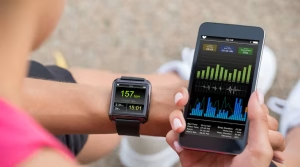The Rise of Wearable Fitness Tech: What You Need to Track in 2025

In 2025, wearable fitness tech is not just a trend—it’s a lifestyle essential. From wrist-worn fitness trackers to smart rings and AI-powered health monitors, technology is helping millions of people stay healthier, move smarter, and perform better.
Let’s explore the most powerful devices and features that are shaping the future of fitness.
Why Wearable Fitness Tech Matters in 2025
The fitness landscape has changed dramatically over the past few years. Today’s consumers demand real-time, accurate health data at their fingertips. Wearable fitness tech 2025 delivers just that:
- Real-time health monitoring
- AI-driven insights
- Advanced sensor technology
- Seamless integration with mobile apps & smart gyms
These gadgets don’t just count steps—they analyze sleep, monitor heart health, detect stress levels, and optimize your workouts.
Top Wearable Fitness Devices in 2025
Here are some of the top-performing fitness tracking devices leading the market this year:
1. Apple Watch Ultra 2
- Dual-frequency GPS for extreme accuracy
- Blood oxygen, ECG, and temperature tracking
- Advanced workout suggestions via Apple Fitness+
2. WHOOP Strap 5.0
- Focus on recovery, strain, and sleep
- No screen—completely app-driven
- AI coaching to recommend daily activity levels
3. Oura Ring Gen 4
- Tracks sleep stages, temperature, heart rate variability
- Stylish and ultra-light
- Great for 24/7 wear
4. Garmin Venu 3
- Best-in-class battery life
- Accurate heart rate and respiration tracking
- Built-in animated workouts and mindfulness features
5. Fitbit Sense 3
- Stress management tracking with EDA sensor
- Skin temperature trends
- Integrated with Google Health ecosystem
These devices are packed with features designed to give users better control over their wellness.
What Metrics Should You Track in 2025?
To get the most out of your smart fitness trackers, these are the key metrics to watch:
- Heart Rate Variability (HRV): Indicator of recovery, stress, and performance readiness.
- Sleep Quality: Deep sleep, REM, and total duration impact recovery and energy.
- VO2 Max: A strong measure of cardiovascular fitness.
- SpO2 (Blood Oxygen): Helps monitor breathing and detect early health issues.
- Resting Heart Rate: Indicates your general health and fitness level.
- Calorie Burn & Activity Zones: Ensures you’re training at the right intensity.
AI and the Future of Wearable Tech
AI integration is making fitness technology trends in 2025 even more powerful. Many wearables now:
- Predict when you’re most ready to train
- Suggest workout types based on sleep/recovery
- Warn you about stress or potential illness
- Offer mental health prompts & mindfulness sessions
This blend of physical and emotional tracking is creating a more holistic approach to health.
The Rise of Health Ecosystems
One of the major shifts in health monitoring wearables is their connection to broader ecosystems:
- Apple Health & Fitness+
- Google Health
- WHOOP AI Coaching
- Oura’s Insight Engine
These ecosystems sync all your data across apps, devices, and even healthcare providers, making your health profile smarter and more accurate.
Final Thoughts
Wearable fitness tech in 2025 is transforming how we train, recover, sleep, and live. With AI integration, real-time health feedback, and better ecosystem support, these tools are no longer optional—they’re essential.
If you’re serious about optimizing your health, investing in a smart fitness tracker is one of the smartest decisions you can make this year.
Resources:





